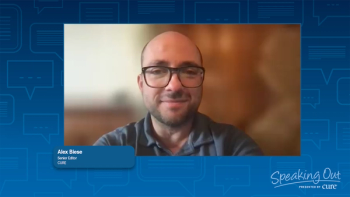
The Basics of von Hippel-Lindau Disease

CURE spoke with Stacy Lloyd, board member of the VHL Alliance, to better understand VHL and its impact on cancer.
Kristie L. Kahl: Can you just explain what VHL is?
Stacy Lloyd: VHL is short for von Hippel Lindau disease. And it is a rare genetic condition characterized by blood vessel tumors that can grow in areas of the body, including the brain, eyes, kidneys, adrenal glands, and several others. These tumors can be benign, or they can be cancerous. And the disease itself is a result of a change or a mutation to the VHL gene, which is a tumor suppressor gene that actually everyone does have. Eighty percent of VHL cases are passed down from a parent. And approximately 20% of the adult cases are actually considered de novo, which means it was not inherited by a parent, but that individual is actually the first in (their) family to have the disease. And then also something I think is interesting about this, even though there are a few different mutations within that gene that can cause the VHL, there's really no way to tell exactly how it will manifest in any one person or family. So early diagnosis and regular surveillance is really important.
Kristie L. Kahl: What cancer types specifically can VHL affect?
Stacy Lloyd: So VHL is a tumor predisposition syndrome, which means that people who have VHL are much more likely to develop certain types of tumors repeatedly over the course of a lifetime. When compared to people in the general population, some VHL tumors are rare and unlikely to occur in the general population. However, that's not the case for all VHL-related tumors. So, for example, clear cell renal cell carcinoma. ccRCC for short, is a type of kidney cancer that occurs in up to 60% of VHL patients, but it also represents about 80% of all kidney cancer in the general population. The biggest difference is that in VHL, these tumors appear a lot earlier than in the general public as well as like more likely to occur in both kidneys versus unilateral. This is pretty important, because the scientific community has acknowledged that better treatments and a cure for VHL would have a direct impact on people in the general population. In fact, in 2019, the Nobel Prize in Medicine was awarded to Dr. Bill Kaelyn, and two of his colleagues for their work on identifying the connection between the VHL gene and kidney cancer, which has actually resulted in the development of extremely promising new therapies. So we're really hopeful that the research being done in the VHL space really could lead to a cure for kidney cancer as well as other types of disorders and cancers, too.
Kristie L. Kahl: How do we test for vhl?
Stacy Lloyd: There are several tests that are part of our regular surveillance as patients, including eye exams, MRI, CTS, audiological, exams, among others, and those are pretty much the most common. With that said, the only way to actually confirm a VHL diagnosis is through genetic testing,
Kristie L. Kahl: What should prompt someone to ensure that they get tested for VHL?
Stacy Lloyd: So if there is a family member that has already tested positive for VHL, it should prompt other members of the family that could be impacted to also get tested. In my case, personally, after my second manifestation in the form of paraganglioma, which is just kind of a free-floating tumor in the abdomen. I had genetic testing for VHL. And I was the first one in my family to be tested. And that obviously came back positive and that really started a series of my family members being tested and there are actually a total of eight of us that have been confirmed with the disease.
For a patient that presents with no family history of the disease, there is some criteria that helps guide when a patient should be referred for genetic testing and counseling. For example, any individual presenting with either mangioblastoma of the brain or the spine or pheochromocytoma, which is a tumor on the adrenal gland, or that clear cell renal carcinoma especially If the patient is younger, and it's presenting in a bilateral way. All of this criteria, though, can be found on the VHL Alliances website.
Kristie L. Kahl: If somebody does test positive, what are the current recommendations?
Stacy Lloyd: Surveillance is extremely important for early detection of manifestations. Many tumors can be identified very early, and when they're very small, and actually just watched closely until they start to cause problems or need treatment, or need to be removed. So if patients are monitored very closely, it's much more likely that they will have better outcomes and better quality of life.




